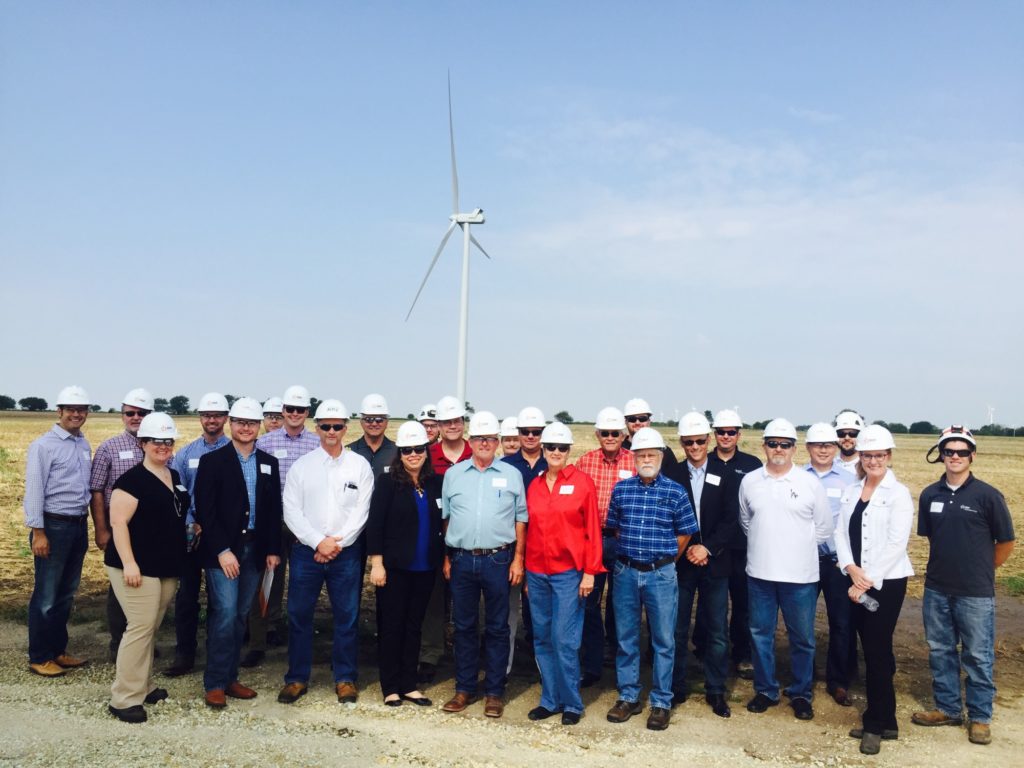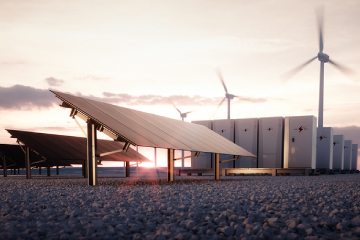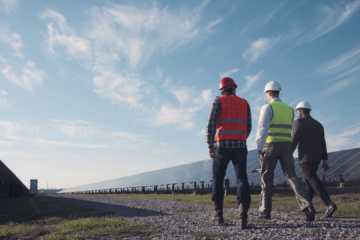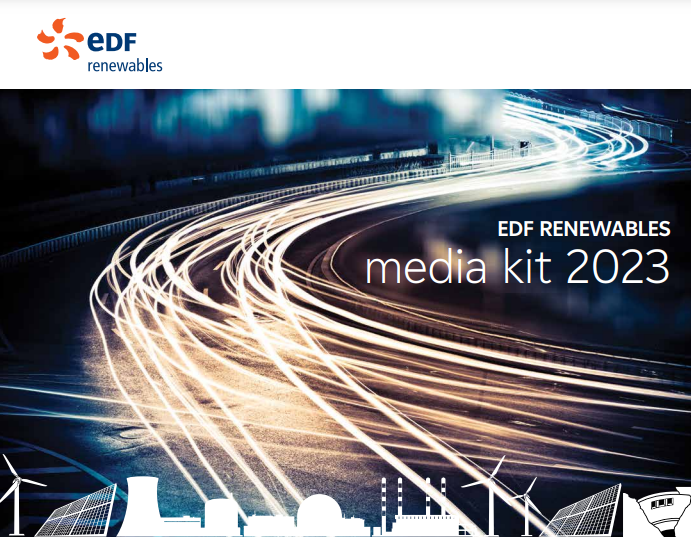- About UsAbout UsWe’re committed to providing future generations with the means to power their lives in the most economic, environmental and socially responsible ways possible.
- What We DoWhat We DoWe are a market-leading, independent power producer and service provider, delivering: wind (onshore and offshore), solar photovoltaic, storage, and electrical vehicle charging.
- Landowners
- Suppliers
- Projects
- Careers
- News
- Contact
EDF Renewables Recognizes American Wind Week alongside Kansas State Legislators
 Geuda Springs, Kan., August 9, 2017 — EDF Renewables (EDF RE) is proud of U.S. leadership in wind power – America’s largest source of renewable energy capacity supporting over 100,000 U.S. jobs across all 50 states. Modern wind turbines were invented in the U.S. and American wind projects are among the most productive in the world. This week is the first American Wind Week, when businesses, schools, government and communities across the country are encouraged to share what American wind power leadership means to them.
Geuda Springs, Kan., August 9, 2017 — EDF Renewables (EDF RE) is proud of U.S. leadership in wind power – America’s largest source of renewable energy capacity supporting over 100,000 U.S. jobs across all 50 states. Modern wind turbines were invented in the U.S. and American wind projects are among the most productive in the world. This week is the first American Wind Week, when businesses, schools, government and communities across the country are encouraged to share what American wind power leadership means to them.
“The opportunity today to visit with important thought leaders in the state legislature highlights the significance of wind in the economic development and job creation for rural America,” commented Tristan Grimbert, President & CEO, EDF Renewables. “Kansas has proven to be a strategic state for our development efforts and we look forward to building more partnerships to bring the benefit of wind to Kansans.”
Kansas Governor Sam Brownback said “Wind energy allows us to harness the power of our vast lands. This renewable form of energy allows us to generate power today while preserving natural resources for our children’s tomorrow.”
Wind power has grown to be a mainstream source of affordable, reliable electricity in the United States. A standard two-megawatt (MW) wind turbine in the U.S. generates enough electricity to power more than 550 average American homes, nearly twice the productivity of wind turbines in China and Germany. Today there are over 52,000 wind turbines in 41 states, producing enough electricity for 25 million average American homes.
“We started American Wind Week to honor the American innovators who taught the world how to harness the wind for large-scale electricity generation. They shaped the wind into a productive resource that makes all Americans safer and our economy more prosperous,” said Tom Kiernan, CEO of the American Wind Energy Association (AWEA).
Close to 99 percent of U.S. wind power capacity can be found in rural communities like Geuda Springs, Kansas, where EDF RE is hosting a tour for Kansas legislators at the Slate Creek Wind Project. Wind projects throughout the state have drawn close to $10 billion in capital investment. Nationwide, U.S. wind projects built over the last decade represent over $143 billion of investment.
Similar stories can be found across the U.S. heartland, where harvesting the wind builds stronger rural communities, including a quarter billion dollars being paid in lease payments to farmers and ranchers each year, and local taxes being used to repave roads, pay teachers higher salaries, and even build new schools.
Wind is a powerful job creator, with over 100,000 American wind workers across all 50 states. Wind jobs grew 9 times faster than the overall economy last year, and “wind turbine technician” is the fastest growing job in America, according to the Bureau of Labor Statistics. Over 60 percent of the value of a wind project is made-in-America by 25,000 workers at over 500 factories. Wind jobs are well-paying careers and an opportunity for U.S. veterans, which wind employs at a rate 50 percent higher than the average industry.
Even if you’ve never seen a wind farm up close, wind energy plays an important and growing role in Americans’ everyday lives. Wind power supplies over 5 percent of U.S. electricity today, with states like Kansas generating 30 percent of its electricity from wind power each year. Adding more wind energy to the electricity grid makes the system more affordable and reliable because wind has no fuel cost and delivers valuable services that make the grid more resilient.
Thanks to wind energy’s low and stable prices, major brands like Google, General Motors, Microsoft, Procter & Gamble, and Walmart are buying wind energy to power the products and services you use every day. Google is 95 percent powered by wind energy. General Motors powers its Arlington Assembly plant in Texas, which makes over 1,000 SUVs a day, with 50 percent wind energy this year, expanding to 100 percent next year. Every bottle of Tide, Downy and Mr. Clean is made with 100 percent wind energy.
Visit Americanwindweek.org to learn more.
Join Our Press List
- © 2025 EDF Renewables North America
- Privacy Policy
- AB 1305 Disclosure
- TCFD Report



